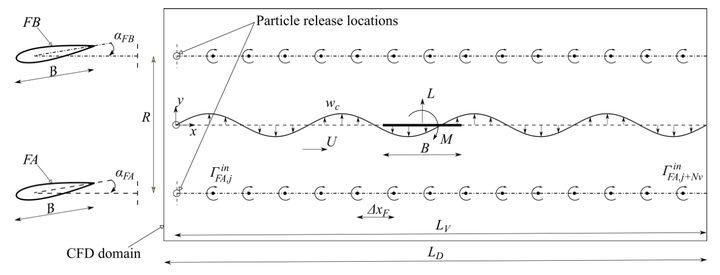An active turbulence generator based on the Vortex Method for simulation of a complex aerodynamic admittance for bridge decks

Abstract
The accurate description of the aerodynamic forces due to free-stream turbulence acting on a stationary bridge deck represents a challenging task. This paper presents a numerical approach based on the vortex particle method for the simulation of a two-dimensional complex aerodynamic admittance. Wakes of two fictitious airfoils are replicated by releasing vortex particles in a computational domain. The two airfoils constitute an active turbulence generator and when they oscillate harmonically in-phase, a sinusoidal vertical gust is generated along the centerline. A previously developed analytical model is extended in order to correlate the amplitude of the sinusoidal gust and the introduced circulation carried by the released vortex particles. The resulting aerodynamic forces of a section positioned downstream of the particle release locations are sinusoids, depending on the incoming gust frequency. The aerodynamic admittance is then determined as a transfer function between the aerodynamic forces and the incoming wind fluctuations. A verification of the method is first performed with the complex Sears’ admittance for a flat plate. Finally, the numerical aerodynamic admittance for a streamlined bridge deck is validated with experimental results.